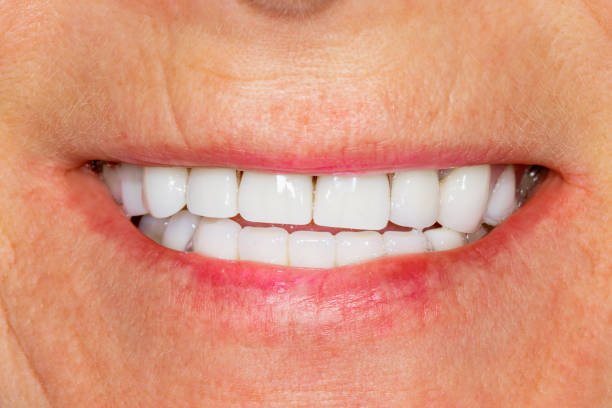A bright, white smile is something many of us desire. It’s one of the first things people notice about us and can leave a lasting impression. But, with the rise in teeth whitening’s popularity, a question arises: does it damage enamel? This article aims to address this concern, providing clear information and advice to help you make an informed decision.
What Is Enamel?
Enamel is the hard, outer surface layer of your teeth. It acts as a protective shield, safeguarding your teeth against daily wear and tear from chewing, biting, and grinding. Enamel is the hardest tissue in the human body, but unlike other parts of your body, enamel does not regenerate. Once it’s damaged, it cannot repair itself, which is why it’s crucial to care for it properly.
How Does Teeth Whitening Work?
Teeth whitening Treatment is a process that lightens the colour of your teeth, removing stains and discoloration. The treatment uses a whitening agent, usually hydrogen peroxide or carbamide peroxide. It is applied to the teeth. These agents penetrate the enamel to reach the discolored molecules within the tooth’s second layer, called dentin. The whitening process bleaches the stained molecules, resulting in a brighter, whiter smile.
Does Teeth Whitening Damage Enamel?
The short answer is no, teeth whitening does not damage enamel. Studies have shown that professional teeth whitening, when done correctly, is safe for your enamel. The whitening agents used are designed to target stains within the teeth without harming the enamel itself.
However, it is important to note that not everyone is a good candidate for teeth whitening. If you have thin enamel, whitening treatments might not be suitable for you. Before any whitening treatment, consult your dentist. They will check your enamel’s health and advise you.
Potential Side Effects of Teeth Whitening
While teeth whitening is generally safe, it can cause temporary side effects. The most common side effect is tooth sensitivity. This happens because the whitening agents dehydrate the tooth. This exposes the enamel’s tubules. These tubules are microscopic channels that run through the enamel to the dentin. When the tooth is dehydrated, these tubules remain open, which can lead to increased sensitivity to hot, cold, or sweet foods and drinks.
Fortunately, this sensitivity is usually short-lived. The tooth rehydrates naturally through saliva, and the tubules close again within a few hours or days. During this time, it’s best to avoid very hot or cold foods and drinks, as well as acidic or sugary substances.
How to Protect Your Enamel During Whitening
To ensure that your enamel remains healthy during and after whitening, there are several steps you can take:
- Consult with Your Dentist: Before starting any whitening treatment, speak with your dentist. They can assess the condition of your enamel and recommend the safest treatment option for you.
- Use ADA-Approved Products: Look for whitening products with the ADA Seal of Acceptance. This ensures that the product has been tested for safety and effectiveness.
- Follow Instructions Carefully: Always follow the instructions provided with your whitening product. Overuse or incorrect application can increase the risk of sensitivity and damage.
- Avoid Staining Foods and Drinks: After whitening, avoid stain-causing foods and drinks, like coffee, tea, red wine, and berries. These substances can harm the enamel. They reduce the whitening treatment’s effectiveness.
- Use a Soft-Bristled Toothbrush: A soft-bristled toothbrush protects enamel from wear. It’s also advisable to use toothpaste formulated for sensitive teeth, as it can help reduce post-whitening sensitivity.
Comparing Professional and At-Home Whitening
There are two main types of teeth whitening. They are: 1. Professional treatments by a dentist. 2. At-home treatments using OTC products. Both options have their pros and cons, and the best choice depends on your individual needs.
- Professional Whitening: A dentist performs professional teeth whitening in a clinic. It involves the use of higher concentrations of whitening agents and often includes the use of a special light to enhance the results. Professional whitening is usually faster and better. It works well on deep, intrinsic stains. However, it is more expensive than at-home options.
- At-Home Whitening: You can buy at-home whitening kits over the counter. They include whitening strips, gels, and custom-fit trays. These products have less whitening agents. They are safer for those with sensitive teeth or thin enamel. However, they may take longer to achieve the desired results and may not be as effective for severe discoloration.
Conclusion
Teeth whitening can safely and effectively brighten your smile. But, it must be done correctly and with precautions. It doesn’t harm enamel. But, consider your dental health before treatment. Consult your dentist. They can recommend the best whitening option. Always follow their advice to protect your enamel.
By taking these steps, you can enjoy the benefits of a whiter smile without compromising the health of your teeth. If you choose professional whitening or an at-home treatment, maintain good oral hygiene. Also, avoid staining foods and drinks to preserve your results.
Ready for a Brighter Smile? Visit Old Town Dental Care
If you’re considering teeth whitening and want to ensure it’s done safely, Old Town Dental Care is here to help. Our experienced dental team will assess the health of your enamel and recommend the best whitening option tailored to your needs. Schedule your consultation today and take the first step towards a brighter, more confident smile. Contact Old Town Dental Care now to book your appointment!







